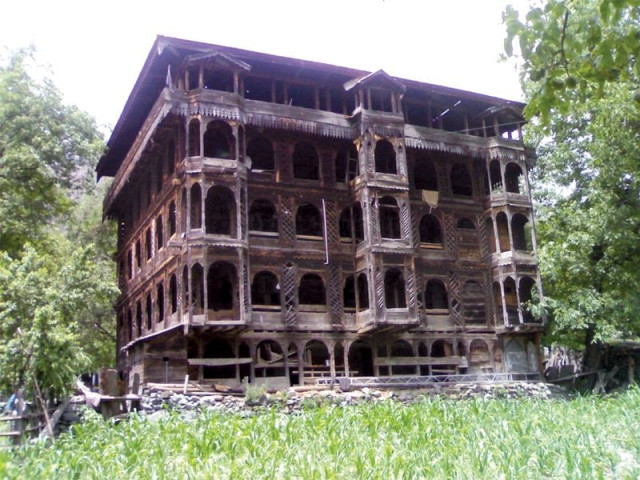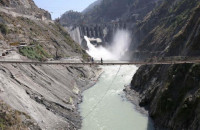Fading beauty: They paved paradise to put up a concrete house
Construction of historic wooden houses no longer the norm.

Historical wooden architecture of Kashmir is on the decline. PHOTO: EXPRESS
The rows of wooden houses once standing beneath the lush green mountains of Neelam Valley are getting shorter as people in these areas are using cement and iron to construct their homes. Prof Abdur Rehman, an environmentalist and resident of Doosat village in Neelam Valley, said “we have been seeing wooden houses here since our childhood, but now people are blindly following modern construction methods which may be suited to cities on flat land, but not here, on the top of the world.
Elders of the area are not welcoming the new trend as they fear it will bring an end to the construction of wooden houses. They believe that a comprehensive awareness campaign must be launched to save the fading wooden architecture across the upper reaches of AJK, which has been part of their culture for hundreds of years.
Neelam Valley welcomes every tourist with picturesque and unique wooden structures with striking balconies and woodwork on windows and ceilings. Many of the old houses have huge doors with intricate carvings on them made by famous craftsmen.

Locals build wooden houses to maximise ventilation in the summer and access to sunlight from all directions in the winter.
Neelam Valley is famous for pine and walnut wood, which is used for interior decoration, doors and beds. The panelling, columns and carving on doors and walls by carpenters are a local speciality which is at its lowest ebb as concrete structures demand masonry rather than skilled woodwork.
Historians give the credit for introducing and promoting wooden houses in the upper reaches of Kashmir --- particularly in Neelam and Leepa valleys --- to Zainul Abidin, the ruler of ancient Jammu and Kashmir. He had wooden mosques constructed, aimed at attracting common people towards wooden houses’ construction with carved doors and windows. People in Neelam Valley claim woodcraftsmen have been an indigenous talent in this region, with some moving to AJK after partition.

Residents believe that the rising trend of concrete use has eroded the traditional panelling, ceiling and carving of doors and windows. This has not only left many carpenters in these remote areas jobless, but has also worn away centuries-old architecture which was once among the most beautiful and impressive parts of the culture and civilization of Kashmir.
Published in The Express Tribune, June 24th, 2013.



















COMMENTS
Comments are moderated and generally will be posted if they are on-topic and not abusive.
For more information, please see our Comments FAQ